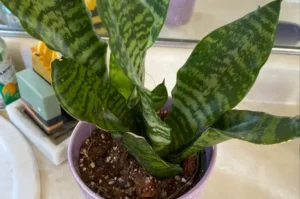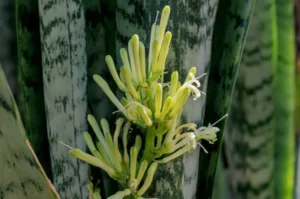If you’re new to the world of houseplants, you’ve probably heard about the snake plant also known as Sansevieria or Dracaena trifasciata. Loved for its resilience, air-purifying qualities, and architectural beauty, the snake plant is a favorite among both beginner and seasoned plant lovers.
But if you’ve been nurturing your snake plant and watching it closely, you might start wondering: Where exactly does it grow from? Does it grow taller from the top like a tree, or does it grow outward or upward from the bottom? This is a common question, and understanding how snake plants grow can help you care for them better.
Let’s explore the growth pattern of snake plants, how to encourage healthy development, and what signs to look for as your plant matures.
Snake Plant Growth Basics
First, let’s talk about what makes snake plants unique. They are succulents, meaning they store water in their thick, upright leaves. These plants originate from West Africa, where they adapted to survive in hot, dry environments. That’s part of why they’re so tolerant of neglect; they’ve evolved to handle tough conditions.
Snake plants grow in a rosette pattern, meaning new leaves emerge from the center of the plant. Unlike a tree that continues growing from the tips of its branches, a snake plant doesn’t get taller leaf by leaf. Instead, it produces new leaves from the base of the plant, near the soil level. Each leaf does not grow longer from the top once it has fully developed. Rather, the plant as a whole spreads by producing new shoots, also called pups, from below the soil.
So, Do Snake Plants Grow From the Top or Bottom?
Snake plants grow from the bottom. More specifically, from the base or rhizome system just beneath the soil surface. Here’s how it works:
- Leaf Formation: New leaves sprout from the center of the rosette at the base. These leaves start out short and tightly curled. Over time, they elongate vertically.
- No Top Growth After Maturity: Once a leaf has reached its full height, it stops growing. It will not continue getting taller from the tip. Any perceived “growth” at the top is usually the leaf unfurling or straightening, not actual vertical development.
- Rhizomes & Offshoots: Snake plants reproduce by underground stems called rhizomes, which push out new shoots (pups). These pups develop into new clusters of leaves and can eventually be separated and potted on their own.
So, when you notice new growth in your snake plant, it’s either:
- New leaves are forming at the base.
- New offshoots or pups are emerging nearby.
- Or a combination of both.
What to Expect as Your Snake Plant Grows
If you’re monitoring your snake plant’s progress, here are a few things to keep in mind:
- Slow and Steady Growth: Snake plants are slow growers, especially in low light or cool conditions. Don’t expect rapid changes.
- New Leaves at the Center: The plant’s core will produce new leaves from the bottom center. These new leaves will gradually grow upward and become part of the mature plant structure.
- Widening Rather Than Heightening: Since old leaves don’t grow taller once fully developed, the overall size increase happens more by adding new leaves than extending old ones
Can You Encourage More Growth?
Yes, you can help your snake plant grow more efficiently with the right care. Here are a few tips:
- Provide Bright, Indirect Light
While snake plants tolerate low light, they grow best in bright, indirect sunlight. Near a window with filtered light is ideal. - Water Sparingly
Overwatering is the quickest way to harm your snake plant. Allow the soil to dry out completely between waterings. In winter, water even less frequently. - Use Well-Draining Soil
A cactus or succulent mix works well. Snake plants hate sitting in soggy soil. - Fertilize Occasionally
A balanced houseplant fertilizer in spring or summer can give your snake plant a gentle boost. Once every 1–2 months during the growing season is sufficient. - Repot When Necessary
If your snake plant is pushing against its pot or has many pups crowding it, consider repotting. This gives the roots space to expand and improves overall plant health.
Frequently Asked Questions (FAQs):
Why does my snake plant look tall but isn’t growing anymore?
The existing leaves have likely reached their full height. Growth will come in the form of new leaves from the base or new shoots from underground.
Can I trim the top of my snake plant to encourage new growth?
No. Trimming the top of a leaf doesn’t stimulate new leaf growth. Instead, it can scar the leaf and make the plant look uneven. If a leaf is damaged, it’s better to cut it at the base.
Will cutting leaves encourage pups?
Not directly. Pups grow from rhizomes underground. However, removing old, unhealthy leaves can help the plant redirect energy to new growth.
Final Thoughts
To sum it up: Snake plants grow from the bottom, not the top. New growth appears at the base of the plant, and mature leaves do not grow taller once they’ve reached their full size. If you want a fuller, more robust plant, focus on encouraging pup production and giving your snake plant the right conditions to thrive.
Understanding this natural growth pattern helps set realistic expectations and allows you to enjoy the slow, steady progress of your hardy snake plant. With a little patience and proper care, your snake plant will reward you with fresh shoots and vibrant, upright leaves for years to come.






